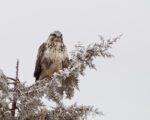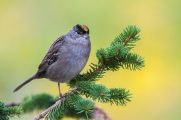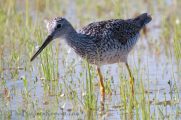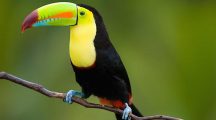Participants will meet at the Fall River Hotel in Fall River Mills for a family-style breakfast and assignments. From Redding, take Hwy. 299E for approximately 75 miles. After crossing the Fall River, take the second right and look for the hotel on the right. Every year, some birders spend the night at this quaint hotel (Phone: 530-336-5550) and avoid the early morning drive. Eastern Shasta County birders are especially invited to participate. After the count, compilation will be held at Round Table Pizza on Lake Blvd. behind MacDonald’s Restaurant in Redding. The room at Round Table Pizza is reserved for us from 5:30pm to 8:30pm. Please RSVP to Bob & Carol Yutzy (boby@c-zone.net) if you hope/plan to participate and let them know if you want breakfast at the hotel so we can give them an estimated number of folks for breakfast.
Tag: birds
Family/Beginner Bird Walk at Turtle Bay
We invite beginners of all ages to our introductory walks on the first Saturday of each month. The walks begin at 9am and meet in the parking lot near the Monolith structure at the South end of the Sheraton Hotel. Binoculars and field guides will be available to loan. Call Roberta Winchell, 530-945-8342, for more information.
Mid-week Field Trip at Clover Creek
In previous Novembers, Clover Creek Preserve has had some real treats for birders (though not guaranteed), including White-tailed Kite, Cedar Waxwing and Say’s Phoebe. More likely are a variety of sparrows such as Fox Sparrow and Lark Sparrow. Several duck species will be there: Ruddy Duck, Ring-necked Duck, occasionally Green-winged Teal and others. The vernal pools (if filled) may attract Greater and Lesser Yellowlegs. Open space birds such as American Pipit, Western Bluebird and Western Meadowlark are usual. Join trip leader Linda Aldrich in the parking lot off Shasta View at Venus Street at 8:00 am for this half-day trip.
What’s Belize Got That We Don’t?
Not yellow-billed magpies, but plenty of their own beauties! Chapter members Jay & Terri Thesken accompanied several US Fish & Wildlife birders along with two naturalists from Belize on a boat trip through Belize and Guatemala last January. Their resulting slideshow includes shorebirds, pelagic birds, tropical birds, raptors and songbirds. Come join Jay and Terri as they present their travelogue.
Family/Beginner Bird Walk at Turtle Bay
We invite beginners of all ages to our introductory walks on the first Saturday of each month. The walks begin at 9am and meet in the parking lot near the Monolith structure at the South end of the Sheraton Hotel. Binoculars and field guides will be available to loan. Call Roberta Winchell, 530-945-8342, for more information.




